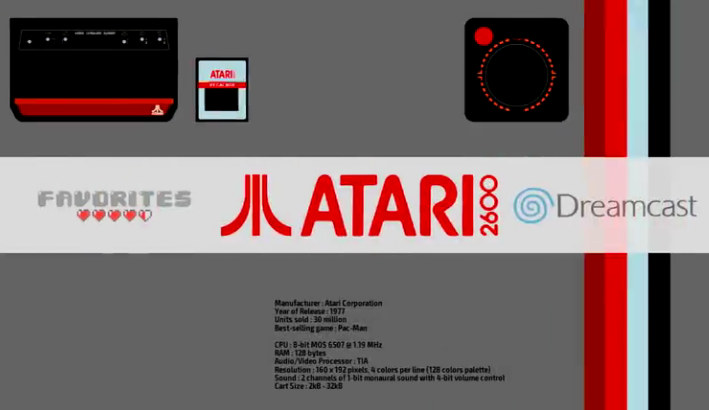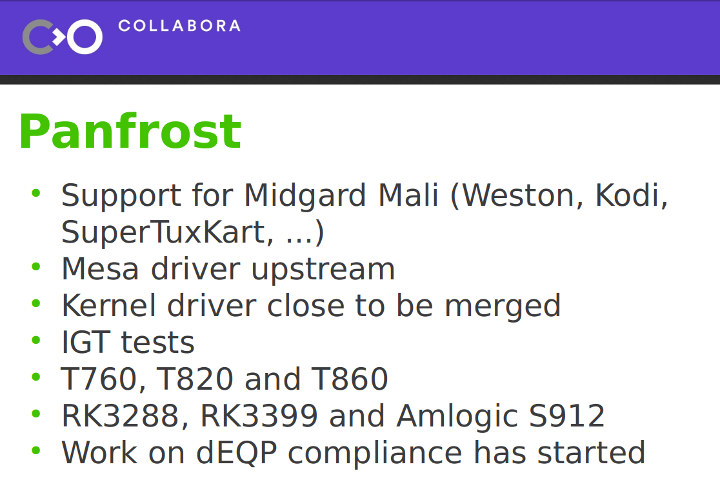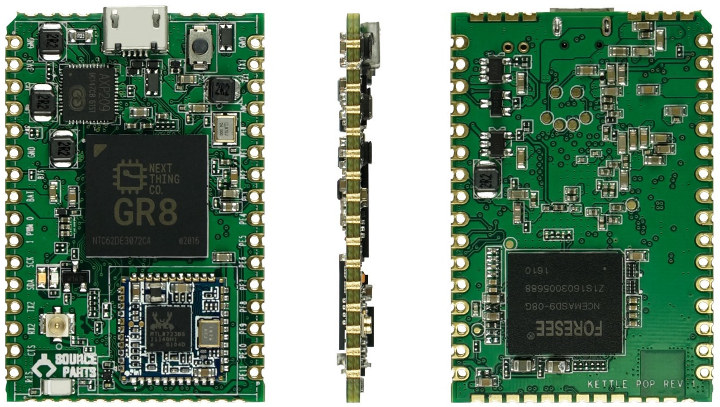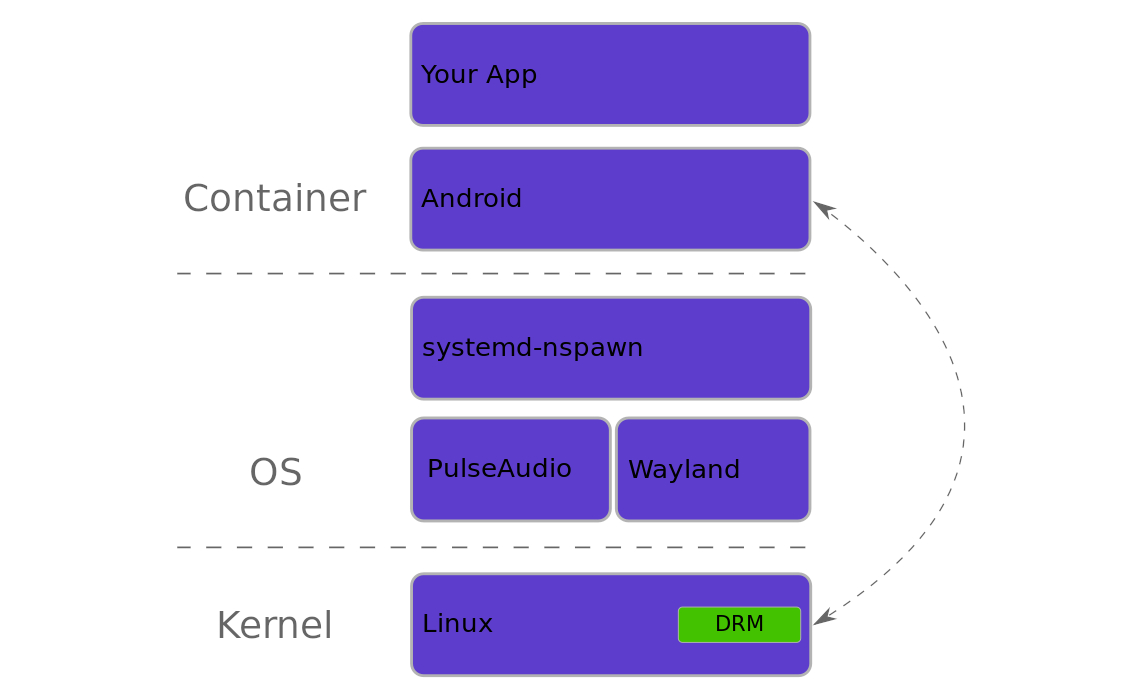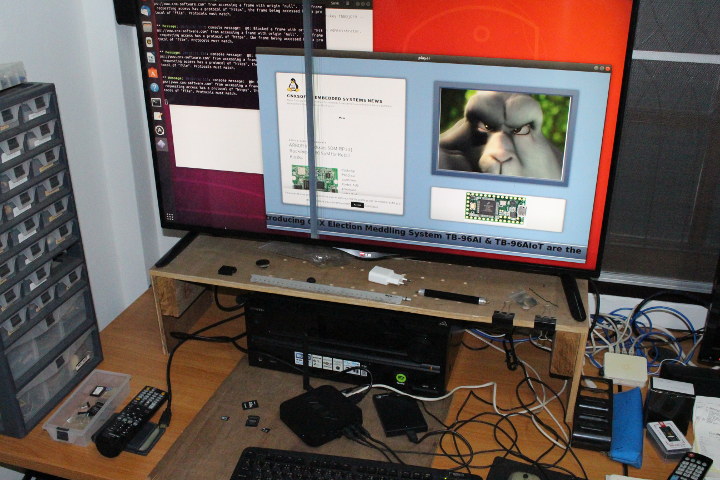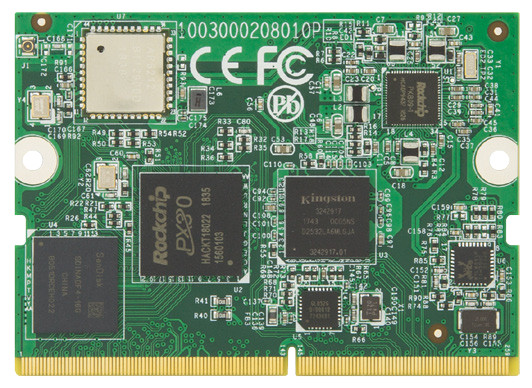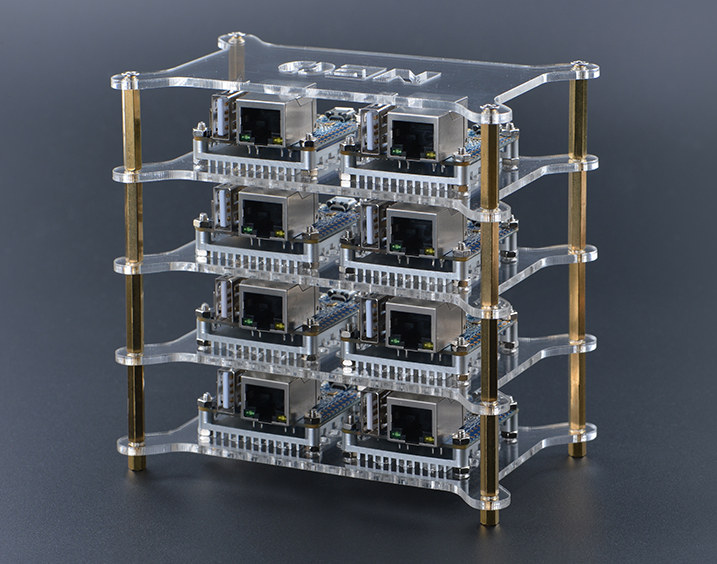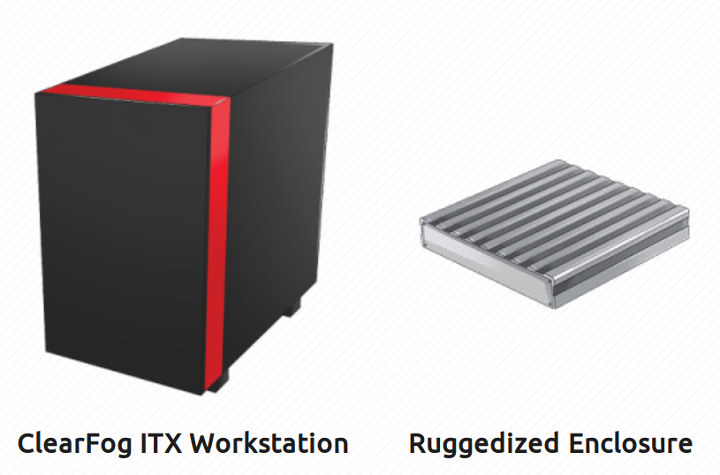There are already several ways to run retro games on development boards, with for example RetroPie, and derivatives like RetrOrangePi, Lakka and Recalbox. Batocera.Linux is another option that I had never heard about so far, and works on PCs, as well as Raspberry Pi and ODROID boards, with ODROID-N2 support having been added very recently. batocera.linux operating system can easily be run from a USB flash drive on your computer without altering your existing OS, while it will boot from a standard microSD card on Raspberry Pi and ODROID boards. Beside retro-gaming support, the OS also includes Kodi media center for playing videos, or listening to music. You may even play games in it since retro-gaming support was added in Kodi 18. The partial compatibility table above shows all platforms have a different level of support, and for Intel hardware support more emulators than Arm based boards. The Orange arrow […]
Panfrost is an Open Source Driver for Arm Mali Midgard GPUs
Getting GPU drivers to work on Linux with Arm SoCs was really a struggle a few years ago due to close-sources binary blobs that required all bugs to be fixed by a single team. But in recent years we’ve seen good progress with open source mobile GPU drivers including Freedreno for Adreno GPUs, and Etnaviv for Vivante GPUs. Arm Mali also got its own open source Lima driver worked on for many years but only for older Utgard GPUs (Mali 400, Mali 450). However, during the Opensource GPU Drivers BoF at Linaro Connect Bangkok 2019, Rob Herring, Technical Architect at Linaro and Tomeu Vizoso, Principal Software Engineer at Collabora, discuss the status of drivers, and I learned about an open source driver for Mali Midgard (Mali-T6xx, Mali-T7xx) GPU called Panfrost. As we’ll see below, the driver is already capable of running basic demos, has been upstreamed to Mesa, and tested […]
Kettlepop is a Limited Edition of a CHIP Pro Derivative with 8GB eMMC flash
Next Things Co. CHIP was a $9 Arm Linux board based on Allwinner R8 processor that become fairly popular due to its low price, built-in WiFi & Bluetooth connectivity, open source hardware design, and integration into fun kits such as PocketCHIP portable gaming console/ Linux handheld computer. Later the company expanded their product line with CHIP Pro featuring Allwinner GR8 system-in-package, and designed as a low profile system-on-module to make it more suitable for integration into commercial products. Sadly, the company eventually ran into financial problems, and had to fold later in 2018. However, later that year, a company called Source Parts announced they were working on Popcorn Computer, a derivative of C.H.I.P. board, and appears to have sold it through Amazon US for a time. But this morning, I was informed that a board called Kettlepop was added to HackerBoards database with Next Things Co. GR8 SiP, and also […]
SPURV Runs Android Apps in Linux over Wayland
We’ve previously seen it was possible to run Android apps natively inside Linux thanks to Anbox that leverages the Linux kernel in Ubuntu for better integration and performance, and uses an LXC container to run Android operating system. Collabora now offers a different solution with SPURV that runs the full Android OS, including a separate Linux kernel, in its own container and works over Wayland thanks to a graphics bridge from Android to Wayland. Four main components are part of the implementation: Android target device – This component integrates SPURV into Android by using the device infrastructure that the Android codebase provides, and the company specifically the target runs inside of a systemd-nspawn container. SPURV Audio – Bridges the Android Audio Hardware Abtraction Layer (HAL) to the host PulseAudio stack. SPURV HWComposer – Integrates Android windows into Wayland by implementing a HWC-to-Wayland bridge, where HWC is the Android API for […]
MINIX NEO Z83-4U Review – Ubuntu 18.04, Kodi 18, and Xibo Digital Signage
MINIX NEO Z83-4U is a Cherry Trail mini PC pre-loaded with Ubuntu 18.04. I received a sample a little while ago, and in the first part of NEO Z83-4U review I checked out the specifications and hardware that appears to be exactly the same a MINIX NEO Z83-4 Pro mini PC, except for the eMMC flash capacity that has increased from 32GB to 64GB. Since the mini PC comes with an older Atom X5-Z8350 processor, and is designed for commercial applications, I’ve decided to make a slightly different review. We already now how the system is supposed to perform thanks to benchmarks with NEO Z83-4 mini PC running Windows 10 Pro, so I’ll just check the main features are working as expected in Ubuntu 18.04, test audio & video support in Kodi 18.1, and try out Xibo Linux open source digital signage CMS and player on the mini PC. MINIX […]
ARBOR Introduces SOM-RP301 Rockchip PX30 SoM for Retail Kiosks
Rockchip PX30 is a quad core Cortex-A35 processor with a dual VOP (Video Output Processor) in order to drive two independent displays, that has low power consumption, low thermal requirements, and that we previously found in some car infotainment systems. But the processor is also suitable for other applications, and ARBOR Technology recently launched SOM-RP301 system-on-module based on the PX30 processor, and specifically designed for fanless retail kiosks such as electronic restaurant menus, automated currency exchange machines, ticketing kiosks and more. SOM-RP301 system-on-module specifications: SoC – Rockchip PX30 quad core Cortex-A35 processor @ 1.5 GHz with Arm Mali-G31 MP2 GPU System Memory – 1GB LPDDR3 (Up to 4GB as option) Storage – 16 GB eMMC flash Connectivity – Fast Ethernet transceiver, 802.11 b/g/n/ac WiFi 5 + Bluetooth 4.0 module Edge Connector – SO-DIMM connector with Display – LVDS or MIPI DSI Camera – MIPI CSI RX interface with 8MP ISP […]
Introducing CNX Election Meddling System
We love what we do at CNX Software, covering news, product launches, reviewing various types of boards and devices related to embedded systems. But we are also trying to expand our readers’ and our own horizon, always on the look out for unmet market needs that may be filled by the community at large. A few years ago, we found out that while democracy was all good, about people power and blah blah, it could create severe mental stress to the losing side, with talks of dark days for democracy, the end of the country as we know it, and so forth and so on. So we thought about ways to either help change the election outcome, at least lower the blow by making people feel they did the best they could possibly do beside just throwing a piece of paper in a box. That’s why we came up with […]
ClearFog ITX Workstation May be the Ultimate Arm Developer Platform
Most people are still doing Arm development work on x86 platforms, because there aren’t really any viable equivalent in the Arm world. Current options include Edge Server SynQuacer E-Series (aka Linaro Developer Box), a $1,250 Arm PC shipping with a 24-core Arm Cortex-A53 processor, 4GB RAM (by default), a 1TB hard drive, and Geforce GT710 graphics cards, as well as the much more powerful GIGABYTE ThunderXStation workstation with up to two Cavium ThunderX 32-core Armv8 processors, 32GB to 128GB RAM configuration, NVMe storage, and more. The former was a good place to get started, but the Arm Cortex-A53 cores clicked at 1GHz provided limited performance, and the GIGAGYTE workstation costs over $12,000, so it’s only suitable for projects with specific needs and/or a high expected return on investment. That’s why there will be a discussion about Designing a next generation ARM Developer Platform at Linaro Connect 2019 next week in […]


